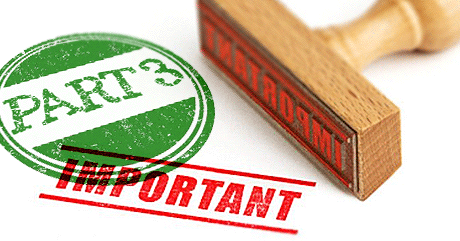Why is S. 967 So Important to the Ambulance Industry? Part III
Three weeks ago, we began the first of four consecutive blog posts dedicated to helping us all understand the importance of Senate Bill 967 entitled the “Medicare Ambulance Access, Fraud Prevention and Reform Act of 2017.”
 In that opening post, we explained that the bill addresses four areas to benefit EMS in America.
In that opening post, we explained that the bill addresses four areas to benefit EMS in America.
- Reform to the Medicare ambulance fee schedule
- Prior Authorization for ambulance transports of ESRD beneficiaries
- Requiring providers of services and ambulance service providers to submit cost data and other information with respect to ambulance services
- Treatment of ambulance service providers
In Week One we focused on how the bill proposes to permanently incorporate the add-on bonus payments to the Medicare ambulance fee schedule. Week Two’s discussion centered on the proposal to add a Prior Authorization process for pre-approval of all ambulance transports provided to ESRD beneficiaries to and from dialysis treatments.
This week we take a look at the next part which may be a bitter pill to swallow for many of us.
Data Collection
S. 967 calls for the ambulance industry to “…submit cost data and other information with respect to ambulance services.”
We’re sure you’ll share our feelings about anything the Federal government requires us to submit- and that isn’t always a good feeling. But when you think about it, shouldn’t EMS take its rightful place alongside other health disciplines and stand ready to be accountable for the dollars that are spent to support us?
If the other disciplines must submit data to justify payments, then why do we in the ambulance industry think that we should be exempt?
We Complain Loudly
This industry complains loudly about the underfunding provided by the current Medicare ambulance fee schedule, and yet we cannot agree about how to share the costs in real dollars for what we do.
S. 967 justifies adding this requirement in order to do the following…
- Evaluate the appropriateness of payment rates
- Provide Congress information on the utilization of capital equipment and ambulance capacity
- Allow Congress to review different types of ambulance services across various geographic locations, especially rural and low population density areas
The collection of data will be accomplished by a sampling methodology that is statistically appropriate. There will be a public comment period during which we are sure that the American Ambulance Association and other ambulance industry advocates can render their opinion regarding the process and the form it will take. The bill calls for industry stakeholders to have input in the sampling methodology and data collection system.
From the point that the bill becomes law, the data collection process will be called for in 6 months with notice to the sampled ambulance service providers to come immediately thereafter. Data would be required to be submitted in a 120-day window and then not less than every 5 years moving forward until the year 2020 and thereafter data is to be collected every 3 years.
What Information?
The bill outlines the information that Congress wishes to review. It includes…
- Organizational designation of the EMS agency sampled (ie. Government authority, independent company, public safety/fire-based, hospital-based, other)
- Percentage of volunteer labor each service utilizes
- Volume of ambulance services furnished per year
- Percentage of emergency versus non-emergency transports conducted per year
- Average duration of individual transports
- Does the provider have a sole source contract or not?
- Is the provider required to pay fees to a local jurisdiction to provide service?
- Percentage of transports that are urban, rural or conducted in a defined low-population density area
- Cost data on total revenue including Medicare, subscription programs, Medicaid, other health care plans, self-pays, public funding, fundraising and donations, uncompensated care and write-offs
- Cost data on total costs including costs for labor (paid or volunteer), operating costs, administrative costs, vehicle and fleet, equipment and supplies, maintenance, building and facility, administrative including central office, local jurisdiction costs and readiness costs.
And…What If We Don’t Respond?
If the bill passes, a 5-percent reduction in payments for a 1-year period will be made beginning on January 1, 2021 if a sampled EMS agency fails to respond to a request to provide the data?
But why wouldn’t we respond?
Okay, I get it…we’re all busy and we have plenty of other “required” things to do, but this bill needs to become law to save a lot of EMS agencies. We need the other provisions in this bill to work, so if the government feels they need an ounce of accountability to justify giving us what we want and need, then we reluctantly but wholeheartedly support the measure.
We hope you do too!